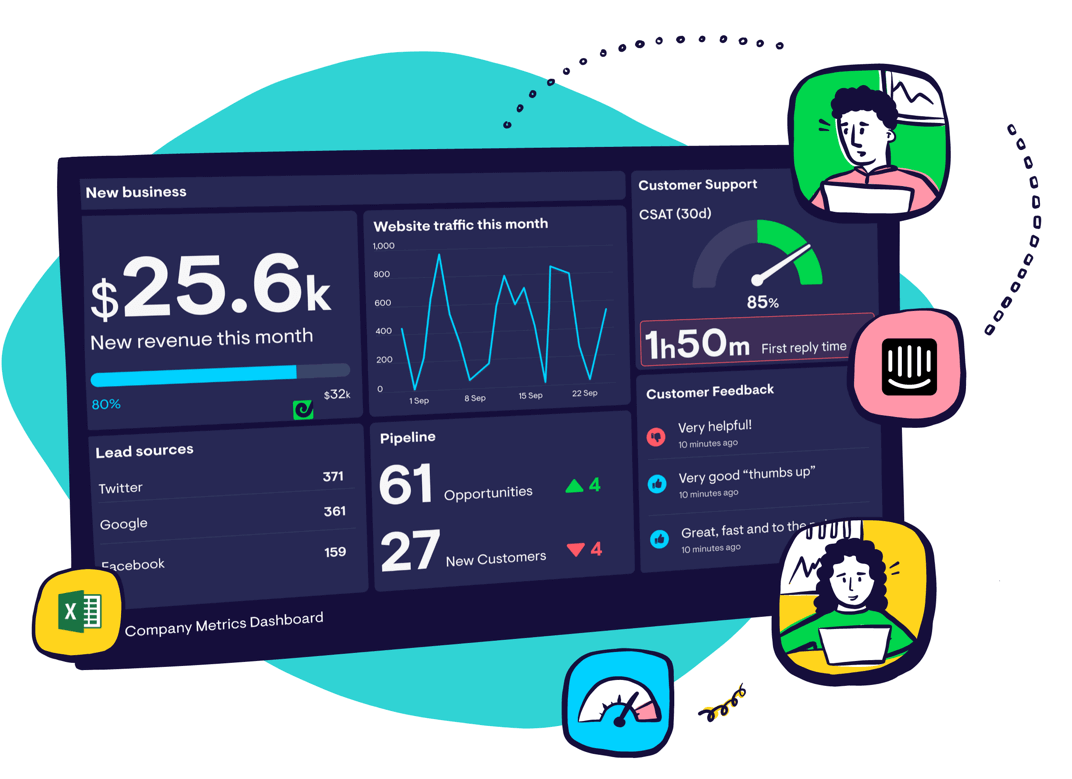Revenue by Traffic Source
What is Revenue by Traffic Source?
Revenue by Traffic Source is a breakdown of total revenue by channel such as social, organic search, paid search, referral, etc. This metric highlights the most valuable sources that direct traffic to your ecommerce site or mobile app.
Advice from Ecommerce Experts: Why Revenue by Traffic Source is critical
“The data on the growing and shrinking traffic sources is very interesting because it not only helps us identify new trends in consumer behavior but also helps us identify where marketing dollars should be spent.” - Justin Butlion, Content and Social Marketing Manager of Yotpo.
“Which traffic sources contribute the most cash on a last click basis? If money makes the world go round, Google makes the world wide web go round, contributing a whopping 67% of revenue, 42% organic and 25% CPC. The next best non-direct channel for revenue is actually email. In fact, the combo of Google and Email represents almost three-quarters of revenue (73%).” - Alan Coleman, Founder and CEO of Wolfgang Digital (from Wolfgang E-Commerce Benchmarks 2016 Report)
“Revenue by traffic source is essential since it shows which channel your customers are coming from. If you only track visits or transactions, you’re missing half the story. You only get a handful of chances to reach your most dedicated customers, and spending the time and money to market through an unreliable traffic source is going to cut into your revenues.” - Catalin Zorzini, Owner of Ecommerce-Platforms.com and Founder of Mostash.com
How to calculate Revenue by Traffic Source:
In order to track Revenue by Traffic Source, you’ll need to use an analytics tool (such as Google Analytics or something similar) and set up ecommerce tracking. (See here for step-by-step instructions.)
Once each transaction is being tracked, you can breakdown your revenue by the various online sites and sources that direct traffic to your site.
Pros:
Revenue by Traffic Source shows you which channels are most valuable and where to invest more resources. This metric reveals where most of your customers hang out and potentially their intent when they arrive on your site.
If they come from a search engine, they’re likely looking for a specific product or solution. If they’re coming from social, it might be from a friend that recommended your product or from a paid ad. This allows you to better anticipate their expectations and improve the overall customer experience.
Cons:
Assessing revenue based on traffic source only shows one aspect of customer behavior. For example, it’s difficult to track customer/friend referrals that typically get categorized as ‘direct’ traffic. It’s helpful to pair this metric with other demographic information and purchasing habits to truly understand who your customers are and what they care about.
Relevant Ecommerce Metrics and KPIs:
If you’re adding Revenue by Traffic Source to your ecommerce dashboard, you might want to also track these related ecommerce metrics for context.
Industry Benchmarks
This metric varies depending on the company and product(s). It’s best to identify which channels perform the best for your company and then work from there to increase traffic from the most effective sources in terms of value and conversion rates.
Additional Notes
There are a couple different attribution models you can use to calculate the traffic source. The most common is last-click or last interaction attribution which gives all the credit to the page viewed immediately prior to visiting your site.
Other options include first-click or first interaction (credits the first page where the online journey began), multi-click (weights each click based on the value you determine for each step), linear (each step weighted equally), time decay (most recent steps weighted more heavily), and position-based (first and last get 40% each and the steps in between split the remaining 20% eveningly).
Learn more about attribution models here.
